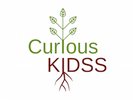|
Follow the instructions for the Field Study Fun activity's Warm Up section provided in the Growing Up WILD guide. In #2 of the Procedure, one option is to follow the instructions given, while substituting the Curious KIDSS Data Collection sheet or the Curious KIDSS Science Notebook for the GUW Field Study Data Sheet. Another option is to rope off or set boundaries for a study plot to revisit during the year. Boundaries can be roped off or use natural boarders like a parking lot or fence or tree line. Within that set off space, students can use the hula-hoops to define the space for their small group’s observations. Curious KIDSS Data Collection Sheet In order to better align to Ohio’s Learning Standards, the data collection sheet for outdoor observations has been modified to specifically address Ohio's Learning Standards in social studies, mathematics and science for 2nd grade. The additions to the data collection sheet focus on collecting and monitoring weather data over long periods of time. While not explicitly addressed in the collection sheet, students should use the data they collected to look for weather patterns over seasons, cloud types and precipitation occurrence, wind speeds or directions and precipitation, While outside, ask students to find, record and share examples of the following concepts:
1 Comment
LH 2nd Grade Teachers
10/14/2016 11:16:39 am
We love this part, and the data collection form! No changes.
Reply
Leave a Reply. |
||||||||||||

